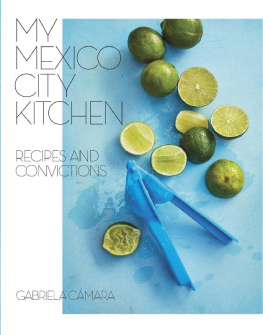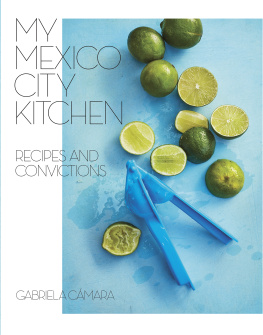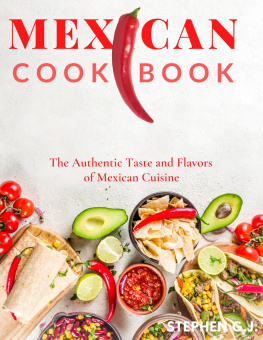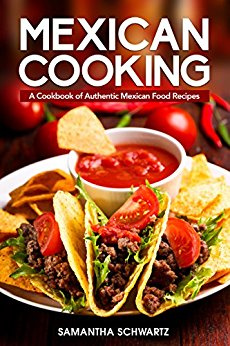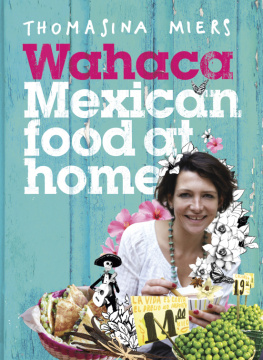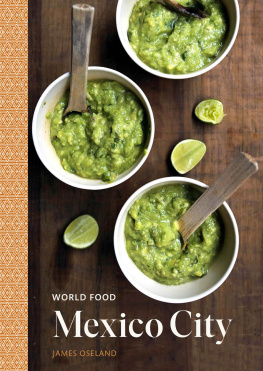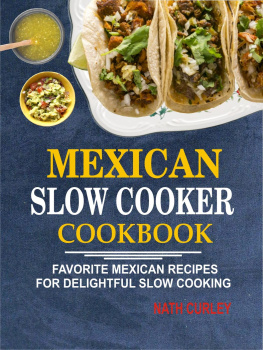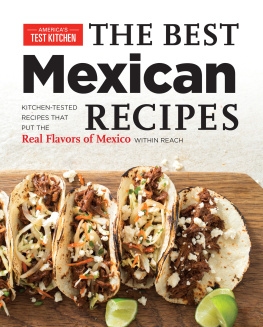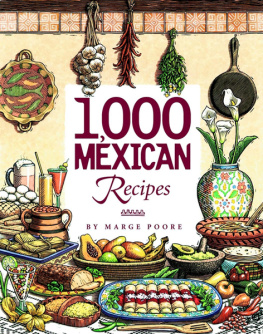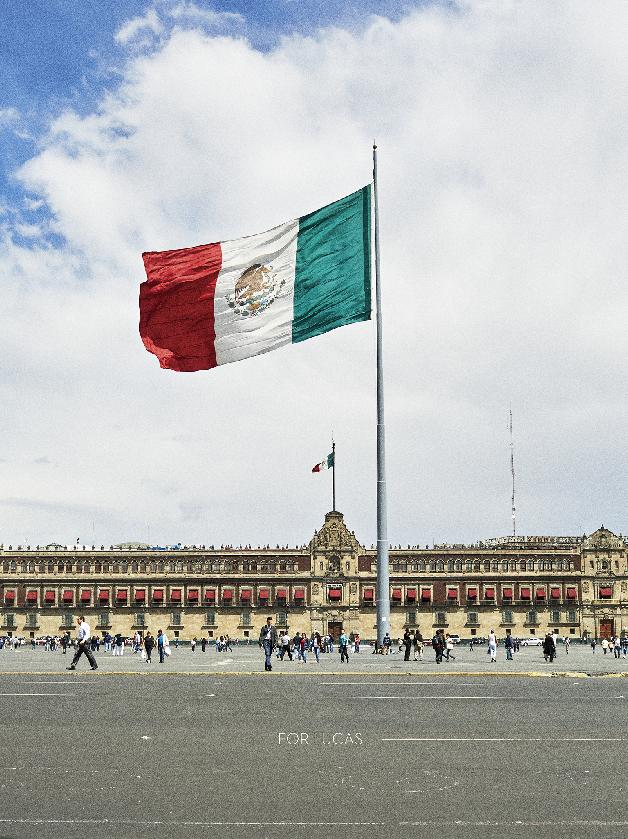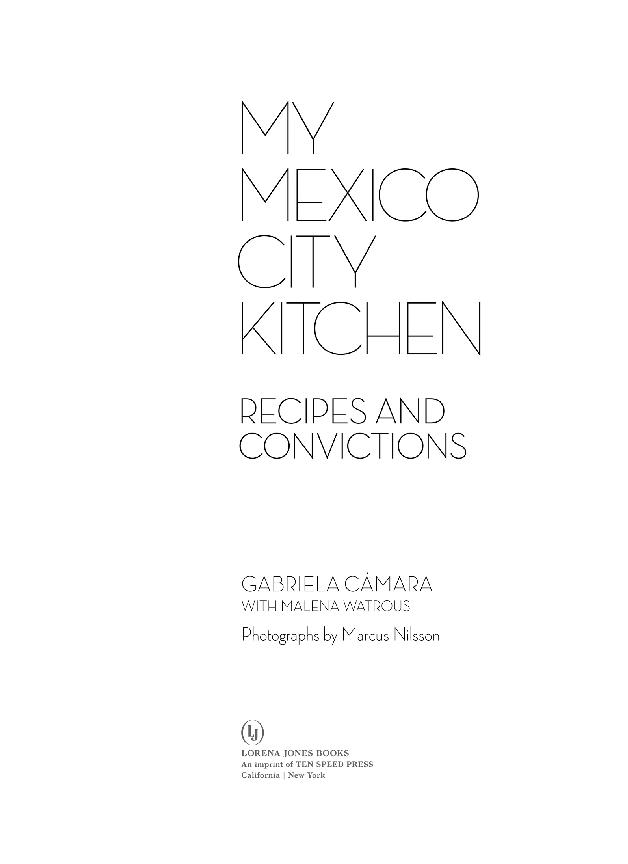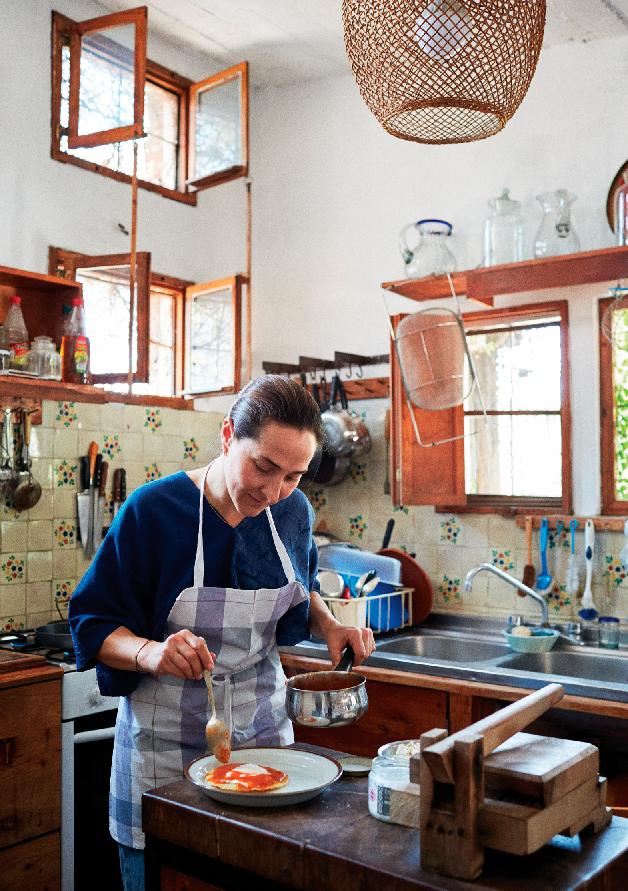Text copyright 2019 by Gabriela Cmara
Photographs copyright 2019 by Marcus Nilsson
Published in the United States by Lorena Jones Books, an imprint of Crown Publishing Group, a division of Penguin Random House LLC, New York.
www.crownpublishing.com
www.tenspeed.com
Lorena Jones Books and the Lorena Jones Books colophon are trademarks of Penguin Random House, LLC.
Library of Congress Cataloging-in-Publication Data on file with publisher
ISBN9780399580574
Ebook ISBN9780399580581
v5.3.2
prh
CONTENTS
BSICOS
Basics
DESAYUNO
Breakfast
ANTOJITOS Y PRIMEROS
Finger Food and First Courses
PLATOS FUERTES
Main Dishes
POSTRES
Desserts
BEBIDAS
Drinks
NOT YOUR TYPICAL MEXICAN GIRL
I learned to make tortillas because I wanted to fit in. I was seven years old, and my family had moved to the small town of Tepoztln, about an hour outside of Mexico City. My mom was an art history professor and most of the other women in our neighborhood were housewives. While they made fresh tortillas at every meal for their familieswhich meant standing at a stove, flipping tortillas one after another and serving them hot, only sitting down after everyone else was done eatingmy mother had no interest in slaving away while the rest of us ate. Today, as a busy single mom running restaurants in two countries, I get it. But back then, I just wanted us to have fresh tortillas on the table like everyone else.
Of course, our eating habits werent the only thing that set us apart. We were different, primarily because we were always living in places where we didnt quite belong. My mother is Italian, and she met my Mexican father in Cambridge, Massachusetts, in the 1960s, when they were both in graduate school and members of the same Catholic community. They moved to the slums of the city of Chihuahua when they married, because my father was working in a community center that he had established. They built the home we lived in themselves, and it was an amazing hippie house. My favorite part was a domed ceiling lined with wine bottles, so the light shone through in all different colors. My parents were definitely ahead of their time, with solar ovens and water heaters, and everything that could make our lifestyle more self-sufficient. We always had a vegetable garden, and as far back as I can remember, I would be watering the plants and feeding the chickens and rabbits.
When we settled in Tepoztln, it was on land that had belonged to my fathers cousin Carlos Pellicer Cmara. Known as the Poet of the Americas, Carlos was a powerful and influential figure, and an expert on pre-Hispanic art, who was super-important to Tepoztln, a town that is very proud of its Aztec background. Among his many accomplishments, Carlos helped bring a high school to the town and built a museum. He was somewhat of an eccentric, but highly respected because he was an internationally celebrated artist, which made it possible for our family to have deep roots in Tepoztln upon arrival. We were very different in most every way, from the art we had on display to the massive quantity of books filling our house to the fact that my father made breakfast for our family every morningand because he spent his days in his study or at a workshop.
In many ways, Tepoztln was the ideal place to be a kid. Most of its streets were still unpaved, and my brother and I got to ride horses bareback and run free in the fields. We learned to drive on the narrow cobblestone streets while sitting on our dads lap, long before our feet reached the pedals. But like small towns everywhere, Tepoztln was a pretty conservative place, and our family was not. Just as in Chihuahua, my parents insisted on growing most of our food themselves, including the vegetables that my mother missed from Italy, such as fennel and arugula. All of our water was rain water, collected in cisterns, then piped into the house; this meant that during the dry season, we had to be very careful with our water use. My brother and I were raised with an understanding that water and food are precious resources, never to be wasted.
I come from a family that has always enjoyed food, and a lot of our family time revolved around cooking and eating. When I was little, everyone was always surprised by how I ate as much as an adult and was willing to try anything. My mother didnt know how to cook Mexican food because it wasnt her culture and my father had lived abroad enough that he didnt cook Mexican food either, but I grew up enjoying Mexican food nevertheless. Victoria, the lady who helped around the house, made the most delicious corn tortillas, which we all loved. In Tepoztln, when the construction workers came to work on our house, they would share the food that their wives or mothers had packed for their almuerzo, a snack to be eaten at their midmorning break: tamales, stews and tortillas, sopes, and pozole, among other delights. I remember trying my first chile relleno taco and thinking, This is the best thing Ive ever tasted. Thanks to my endless curiosity and the generosity of Mexicans, who are used to sharing whatever they are eating, I got an early introduction to many of the simple Mexican foods I still love most. In the market, my favorite snacks were a specialty of Tepoztln, itacates. They are triangles of masa and lard that get cut in half and stuffed with different fillings and then eaten like a sloppy sandwich.
Even though my parents didnt cook much Mexican food, we had plenty of it in our home. Victoria and other ladies in town taught me many of the things I know about Mexican cooking. When I got married, she and a bunch of other ladies prepared a delicious mole for eight hundred people, just as they do for any big party. Every day, Victoria made a stack of tortillas from the corn that she had taken to the molino (mill) down the street to be ground into masa before lunch. Many times at night we would reheat the tortillas, and they were excellent, but I knew they would have been even better if they had been eaten fresh, right after they came off the comal (the oblong metal pan used for stove-top cooking). I decided that I wanted Victoria to teach me how to make them, as we all loved them so much and I figured any respectable household needed an expert tortilla maker.
I come from a family that has always enjoyed food, and a lot of our family time revolved around cooking and eating.
Victoria believed that seven-year-olds were too young to make tortillas. She had a point. For a tortilla to cook properly, the comal needs to be hot, and its easy to get burned. Victoria was very busy and, while she and I adored each other, she didnt have a kind and patient nature. But my parents were firm believers in our capacities from a young age, and theyd always encouraged us to figure out what we wanted to do and go for it. I was annoyingly persistent, so even though Victoria never was that patient with me, I was always around her while she made tortillas and I studied her every move: rolling balls of masa between her palms, squishing each one in a heavy press lined with two halves of a plastic bag, easing the disk onto her palm to give it a couple of extra slaps, and then carefully dropping it onto the comal, where the edges would start to turn opaque as the tortilla cooked. Shed flip it the first time after about 30 seconds. The second side had to cook a bit longer. Then shed flip it again, and the tortilla would puff up, as if someone were blowing air into a balloon.

